When writing software loses its appeal I take a break and do something concrete — hardware design. Here are some recent filter designs:
Four-Band Filter/Combiner:
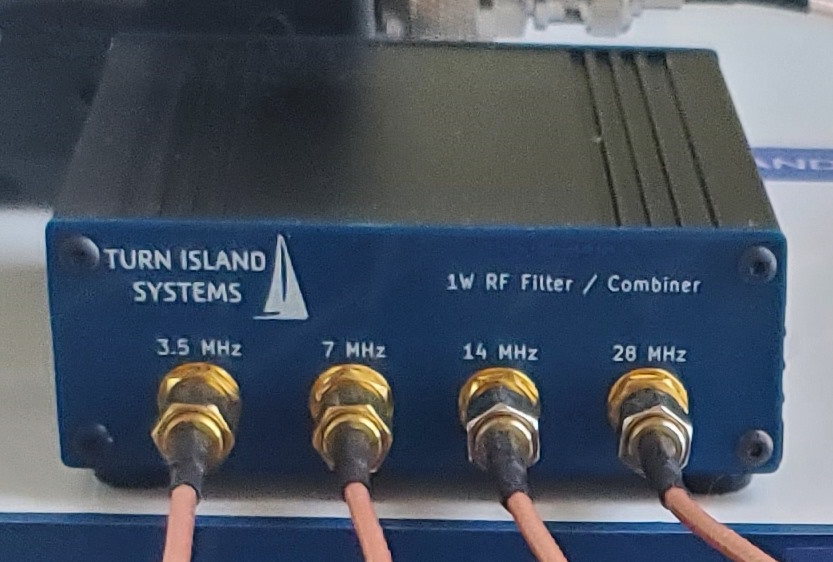
This is used to combine the 1W square-wave outputs of the BeaconBlaster, filtering out the bad harmonics and combining all four inputs into one output which will feed a multiband antenna. We wanted to make this unit with off-the-shelf surface-mount components, so we needed to design fairly wide filters, no closer than one octave apart or there would be excessive interaction between sections. The filter topology also needed to show a high off-channel impedance, again to avoid interactions. Available inductors limited the design to 1W power on each port, with less than 1dB of loss.
The image below shows a simulation of the 60/30/15/6-meter version of this filter. Note that each filter has a deep 3rd harmonic notch.
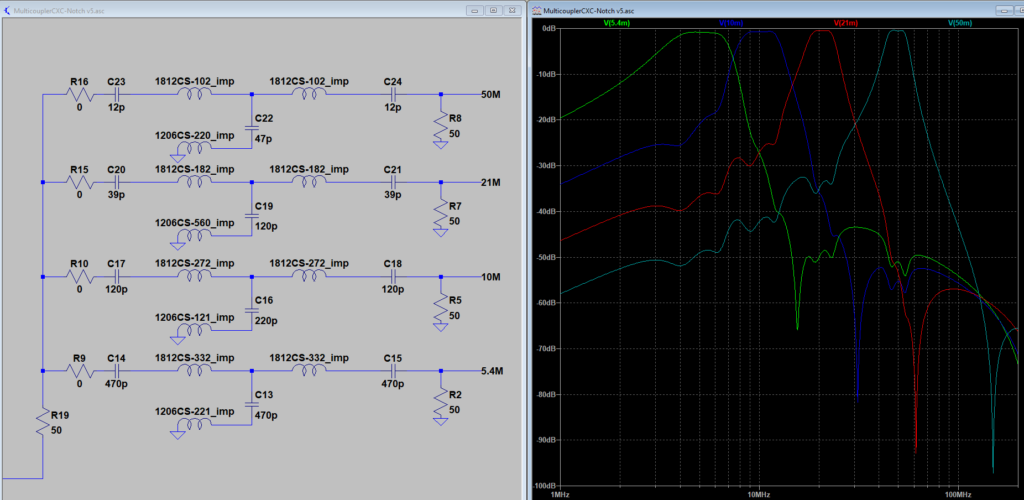
And here is the spectrum of the 80/40/20/10-meter filter, being driven by the BeaconBlaster (using a 20 dB attenuator, actual power levels about 1W per channel). You can see the 80 meter 3rd harmonic at -40dBc:
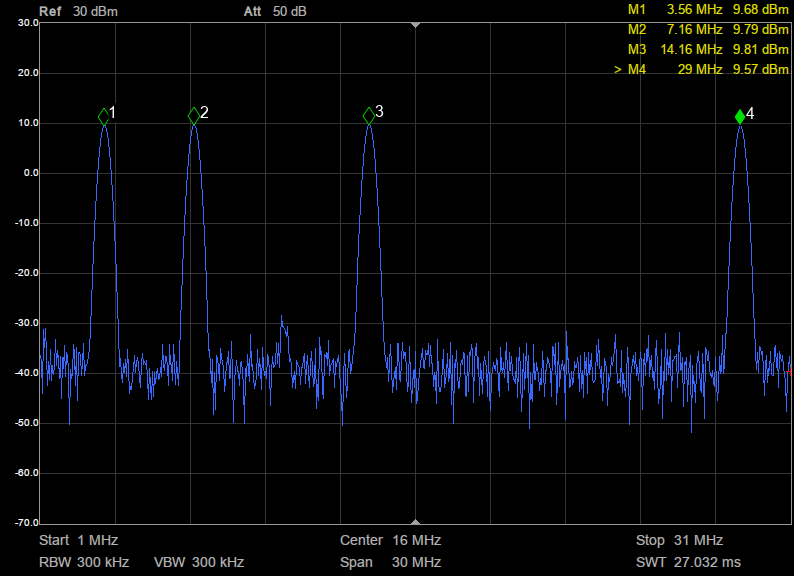
A Shelving / Low-Pass Filter
This board combines a two-stage 10 MHz shelving filter, and a steep four-section 30 MHz elliptic low-pass filter. This is intended to go between an antenna and a SDR having a sample rate of 66 MHz. The shelving filter attenuates the low-frequency signals (where SDR overload is typically a problem), and the LPF is for additional anti-aliasing. The “ideal” design promises 70dB stopband attenuation, simulations show better than 60dB with available surface-mount inductors, and if I get at least 50dB then I will consider it a success.
Boards should be ready for testing in a couple of weeks.
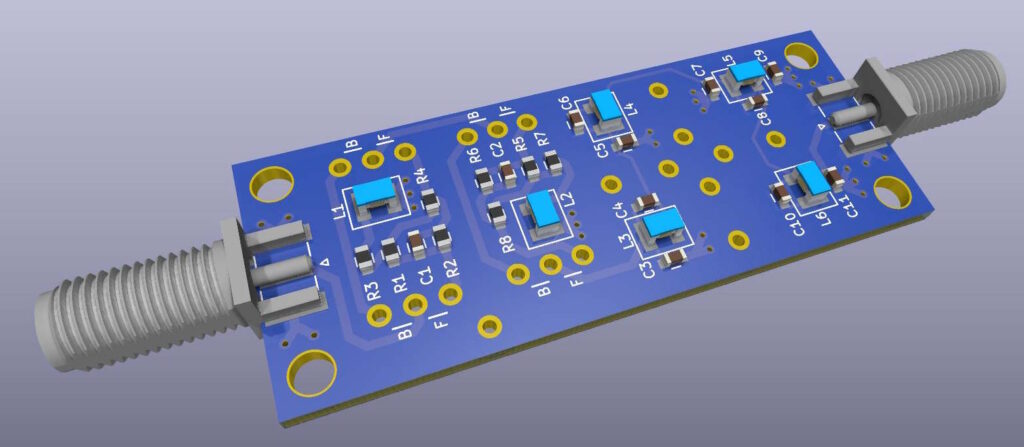
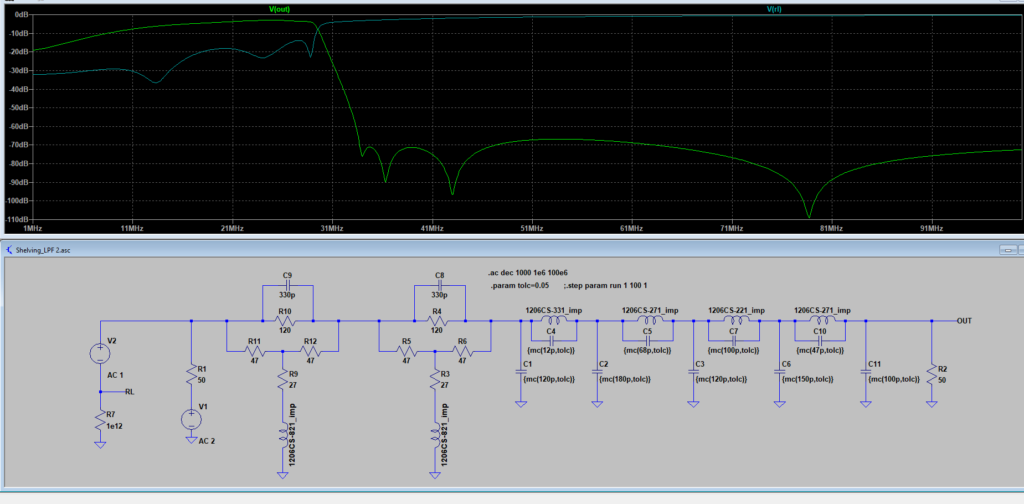
This is being developed in collaboration with some folks who are running multiband receiver sites, including WebSDR and ionosphere research installations. In particular I should acknowledge the advice and contributions of Clint Turner (KA7OEI). The shelving filter was stolen directly from his website: https://ka7oei.blogspot.com/2020/08/revisiting-limited-attenuation-high.html
